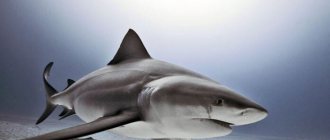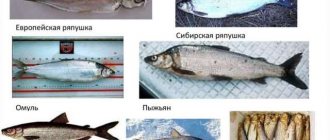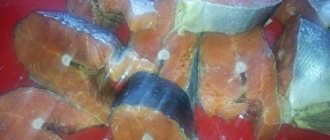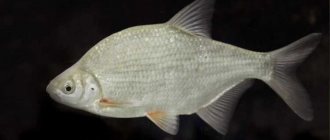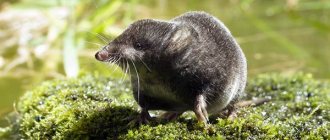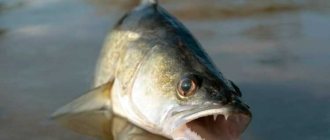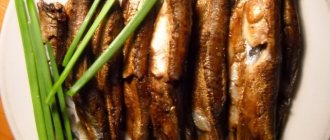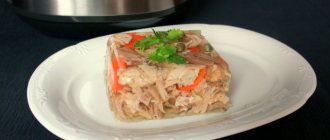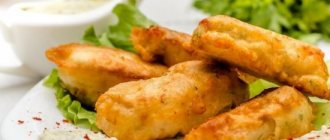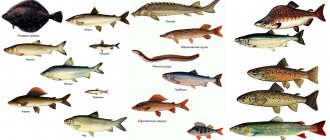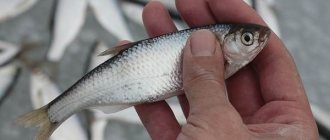Sopa (white-eye) is a rare representative of the carp family. This typical river fish can be called Russian, because it lives in the rivers of the central zone of this country. Fish feed on both plant and animal foods.
Sopa has several names, the most famous of which are white-eyed, glazach or goggle-eyed. It is called white-eyed because of the color of the iris. This fish is white. The fish got its name glazach or goggle-eyed because of its unusual huge goggle-eyed eyes.
The fish has a certain resemblance to bream and silver bream. Only an experienced fisherman will be able to distinguish this fish by its external features. The fish lives in rivers with strong currents and this has affected its appearance. Its body is not as high as its relatives, this allows the fish to maneuver in the current. The fish live in a small population, so they cannot be bred artificially. Mass sales of the meat of this fish is not possible, but it is distinguished by incredible tenderness and taste. Sopa fish is quite rare in the hands of an angler, so catching it brings undoubted joy.
Nozzle size
Sopa is small in size, not distinguished by trophy characteristics. The average length of the fish is from 30 to 40 centimeters, weighing 500-800 grams. There are cases of catching larger white-eye, weighing up to 1 kilogram, but this is rare.
The lifespan of a fish is on average 8-10 years. Grows and develops at an average pace. The greatest increase in length and body weight is in the first year of life. During this time, the fish grows up to 5 centimeters. After the 5th year of life, growth rates decrease, but the weight of the fish increases. At the age of three years, the fish weighs about 70 grams, at 4 years - 150 grams, and after 5 years its weight reaches 400-500 grams. At the age of five years, the fish is ready to reproduce. As a rule, its length during this period is about 20-25 centimeters, and its weight is over 250 grams.
The body of the sopa is elongated, laterally compressed. The eyes are large and occupy 30 percent of the head. The fish has a classic river color. Silver body color with a darker back and light belly.
Reproduction and spawning
Puberty of fish occurs closer to the age of five. At this time, the length of the white-eye is about 20-22 cm, body weight reaches 200-250 grams. Females mature a year later than males. As soon as the temperature in reservoirs reaches a certain temperature of 10-12 degrees, simultaneous spawning begins. This usually happens in the floodplains of rivers on water slides, in mid-April.
The eggs of the white-eye are larger than those of the bream, with a diameter of about 1.8 mm. Spawning occurs in places with high water flow and a very rocky bottom. The number of eggs in fish varies, depending on the body length and age of the fish. The larger the fish, the more fertile it is. Absolute fertility ranges from 12 to 20 thousand eggs. The laid eggs initially remain motionless, only after some time do they begin to move.
Sopa habitats
Sopa lives in the European zone of Russia. The basins of the Black Sea, Caspian, Volgograd, Kuibyshev and Saratov reservoirs are places where you can find populations of this amazing little fish.
Fish became extremely rare in the Kama River and its tributaries. The fish have left the Moscow River. It has become rare in the Tvertsa River and Lake Seliger.
In the rivers of Karelia, fish is also considered very rare. Because of this, it is included in the Red Book of this region.
The fish live in small schools, and gather in huge schools during the spawning period. The fish is truly riverine, but there is one semi-anadromous form, and it lives in the lower reaches of the Volga. For life it chooses clean rivers with medium or strong currents. Fish cannot live in stagnant water. The fish is extremely demanding on the condition of the bottom. It will not live in rivers with silted bottoms and high vegetation. The ideal bottom is rocky.
Description of the species
Despite the common features with bream fish, the bluegill (lat. Ballerus ballerus) is not their closest relative, but forms its own family branch, which, in addition to it, includes the white-eye (lat. Ballerus sapa).
The species received a catchy and easy-to-remember name for the color of its back in dark blue tones with a green tint, which, in combination with a light belly, corresponds to a protective (concealing) color according to the principle of countershadow.
The protective mechanism is adjusted to diffuse overhead lighting, which is typical for all bodies of water. Due to the fact that the shadow falls on the light areas of the body, the fish visually acquires a monotonous color and merges with the surrounding background.
Other features of the blue chinese's appearance include:
- elongated high body (maximum width 1/3 of length);
- flattened sides of a silvery-white color;
- small scales of cycloid shape (with a rounded posterior edge);
- pointed head with terminal mouth turned upward;
- arched lateral line.
The appearance characteristic of the species is also formed by unusual yellowish-gray fins: high and short dorsal, very long (35-45 rays) anal, with a notch and built-up caudal lobes.
Maximum size of blue
The fish does not amaze with its size - the catches contain specimens 200-400 g long and 20-30 cm long. In large rivers and reservoirs with a rich food supply, individuals 40-45 cm tall and weighing over one kilogram are found. The largest bluebird weighed about 2 kg, which is mentioned in some authoritative sources, for example in the “Encyclopedic Dictionary of Brockhaus and Efron”.
To learn more:
Podust: fish lifestyle and fishing methods
Differences between bluegill and white-eye and other fish
Many common nicknames (sintepa, sinchik, singa, sintyavka) clearly indicate the main external feature that allows one to accurately identify this species of cyprinids - the sapphire-olive color of the back. Difficulties may arise only for inexperienced fishermen who will need to distinguish bluegill from other fish of similar body shape and size: bream or white-eye.
Here you don’t need to look for subtle differences in fins, scales, color, but just pay attention to the structure of the mouth: it just looks down - it’s a white-eye (popularly called a glander, eye-catcher, klepets), and if the lips additionally form a retractable tube, it’s a juvenile bream ( white bream).
Podleschik
Sopa lifestyle
The Sopa's lifestyle, behavior, and nutrition depend on the time of year. Spring is the time of awakening of nature and white-eyes as well. As the ice begins to melt, the white-eye becomes active. Remains in wintering areas until the ice disappears completely. They try to stay behind the rifts; the current carries a huge number of bottom organisms there, which form part of their diet. Mature fish begin to prepare for spawning in the spring. This happens after the water is heated to certain temperatures. The fish gather in schools and begin to move upstream. After spawning, the fish returns to its habitat and stops feeding for 1-2 weeks. By mid-May, the fish begin to actively eat after spawning, feeding both during the day and at night. The white-eye fish is an omnivore and in the spring its diet is dominated by animal organisms: insects, gobies, larvae, crustaceans.
In summer, the white-eye is active throughout the day. Numerous flocks are divided into groups. The white-eye feeds from the bottom, as the current brings in large numbers of bottom organisms.
With the arrival of autumn, the fish gather in large steels. As the temperature drops, the fish move further downstream into areas with greater depth. In shallow waters, fish are found, but not so often. In late autumn, the fish find shelter for the winter. Selects bottom recesses. Feeds around the clock until freeze-up.
In winter, the sopa is inactive. He does not stop eating, but the amount of food needed is sharply reduced. It feeds on larvae and detritus found under stones. The structure of its mouth allows it to rake in river sand along with food.
Regardless of the time of year, adults prefer deep areas, while young animals live in shallow waters. Clean, running water is necessary for life. The bottom prefers rocky or pebbly, with minimal plant life.
The white-eye is a schooling fish, leading a sedentary lifestyle.
White-eye breeding
White-eyes live in flocks.
The white-eye reaches sexual maturity at the age of 4-5 years. By this moment, the length of its body should be 18-22 cm, and its weight should be 100-200 g. Males, as a rule, mature a year earlier than females. Spawning is done at a time. The water temperature by this period should be at least 10.5-12 °C. As a rule, this happens on floodplain rifts in the second half of April.
Whiteeye has larger caviar than bream. The egg diameter is approximately 1.7 mm. They lay eggs in places where there is flowing water and rocky soil. Moreover, the number of eggs in females varies depending on age and length: for example, in individuals caught in the Dnieper with a body length of 20 cm and a weight of about 150 g, the absolute fecundity was 8 - 12.2 thousand eggs, with a length of 27 cm and weight about 500 g - 18.5 - 20.9 thousand. Thus, the relative fecundity is approximately 30-80 eggs per gram of body weight.
White-eye on a hook.
The hatched larvae lie on the bottom for some time, since they lack attachment organs, which distinguishes them from other relatives.
Ways to catch sopa
If a fisherman knows the behavior of the sop at one time or another of the year, then he can catch it all year round. It bites both in winter and in summer, the main thing is to choose the right bait and know the characteristics of this fish. Sopa is a cautious fish. Fishing requires concentration, silence and no sudden movements in anticipation of a bite. Fishing with bottom tackle will be catchy: feeder rods, float rods and hooks.
For catching sop from the shore, feeder tackle with a mid-class rod is excellent. The feeder is a 50 g spiral feeder, as it holds the bait better. A bait mixture suitable for bream with the addition of flour is suitable for the feeder.
In winter, fish move to places saturated with oxygen, where there is a chance to catch it. Fishermen need to find the place where the fish stopped and then the bite will be guaranteed. As soon as the bite stops, you should look for a new place where the fish went. The success of winter fishing depends entirely on the angler’s familiarity with the body of water: the bottom, the topography. In winter, the sop only bites animal bait.
In the spring, the sopa will give preference to high-calorie bait, such as bloodworms. It should be planted in several pieces. In the summer, it takes both plant and animal baits. In warm weather it takes maggots well. With the approach of cold weather, they will only bite on bait of animal origin. Bloodworms are a universal bait during the cold season. Hooks must be chosen with barbs, and bloodworms must be placed in 3-4 pieces. Hook size no more than No. 4. The white-eye fish is cunning and dexterous; it can easily remove the bait from the hook without getting caught. The bite is reminiscent of a bream bite.
You can catch white-eye with a spinning rod. Spinner baits such as “shot” and “cone” are suitable as bait. The ideal color combination for spinners: black and white, orange and yellow.
The ideal time to catch whiteeye is late morning and early evening. At night it practically doesn’t bite. Hunting for white-eye is of sporting interest to many anglers. The fish is very active, agile and dexterous.
Gastronomic value of sopa
White-eye is not a commercially caught fish. It is caught quite rarely. However, its meat is extremely tasty and healthy. Those who have ever tried sopa meat will not forget its taste. The meat is very tender, but there are a lot of bones in it. The gastronomic value of sopa lies in the fact that vitamin PP is present in large quantities in its meat. This useful component will protect against vitamin deficiency, weakness, insomnia and digestive problems. Fish meat is useful for reducing cholesterol levels and the proper functioning of the hormonal system. In addition, the pulp of sopa is rich in minerals and trace elements. The meat is low-calorie and ideal for dietary nutrition. Fish has one advantage that makes it valuable for cooking: it lives in reservoirs with clean water, its meat contains a minimum of toxins. Meat is perishable, so it should be cooked as soon as possible after catching. There are many recipes for making white eyes. It is consumed boiled, fried, smoked. The most delicious fish is dried whole.
Fish live in small populations, so mass sale of fish is not possible. Sopa is a small and rare fish whose meat has excellent taste. Finding and catching her is not an easy task. The gastronomic value of the fish, coupled with its inaccessibility, make it a desirable prey for fishermen. Anglers get really excited in the hope of catching a sopa.
